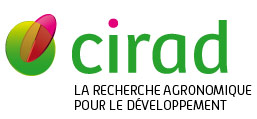The genome of modern sugarcane varieties
Glaszmann J.C., D'Hont A., Feldmann P.. 1998. In : Anon. Some insights into biotechnologicals issues and reports on variety development. s.l. : s.n., p. 4-14. World Meeting of the Directors of Sugarcane Research Centers. 1, 1998-07-19/1998-07-25, Guatemala City (Guatemala).
Molecular markers provide a powerful tool to study the structure and variation of the sugarcane genome. Diversity has been studied using DNA Restriction Fragment Length Polymorphism (RFLP) revealed within the cytoplasmic genomes and within the nuclear genome, using ribosomal repeated DNA sequences and single copy sequences as probes. This permitted confirmation of previous taxonomic schemes and provided novel information. Genome mapping, studies have been focussed on modern varieties for a better understanding, of their complex genomic structure. This permitted the construction of a detailled linkage map and permitted investigation of some aspects chromosome inheritance and pairing behavior in varieties. As a complement, DNA in situ of chromosome inheritance hybridization on chromosomes allowed assessing the contribution of ancestral species to the genome of modern breeding materials. Comparative mapping with distant diploid relatives revealed a large amount of chromosome structure conservation between species, especially between sugarcane and sorghum, and to a smaller extent between sugarcane and maize. Our first results concerning, linkage between markers and genes of agricultural interest are encouraging regarding the future use of molecular markers in breeding schemes.
Mots-clés : saccharum; génome; marqueur génétique; rflp; carte génétique; variété; amélioration des plantes
Communication de congrès
Agents Cirad, auteurs de cette publication :
- D'Hont AngĂ©lique — Bios / UMR AGAP
- Glaszmann Jean-Christophe — Bios / UMR AGAP
